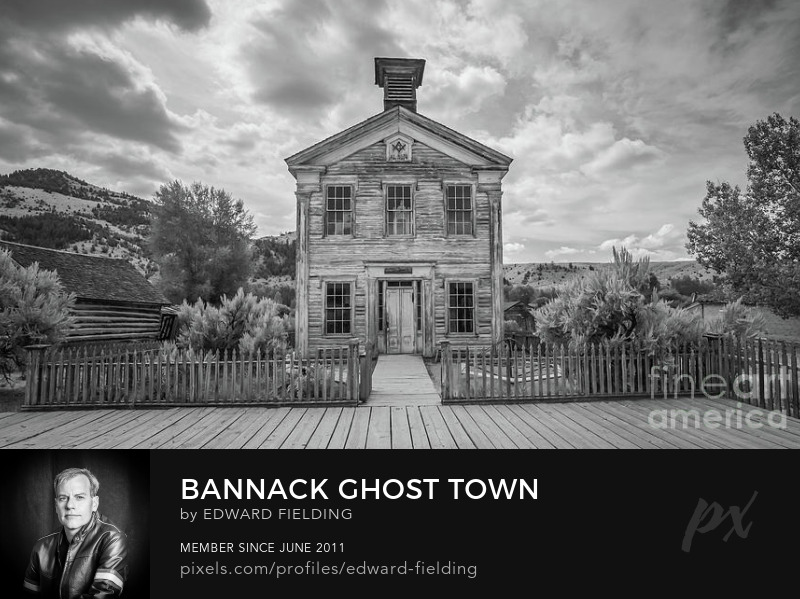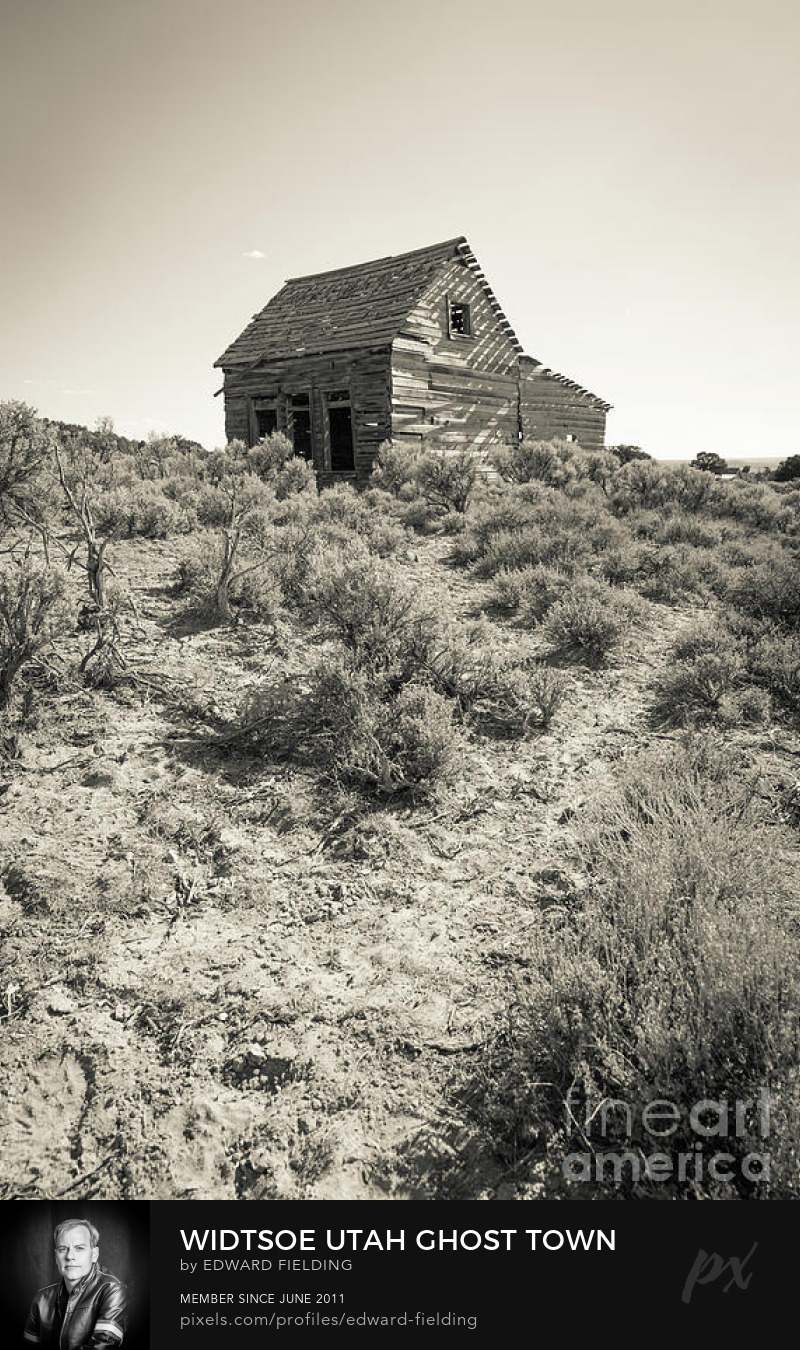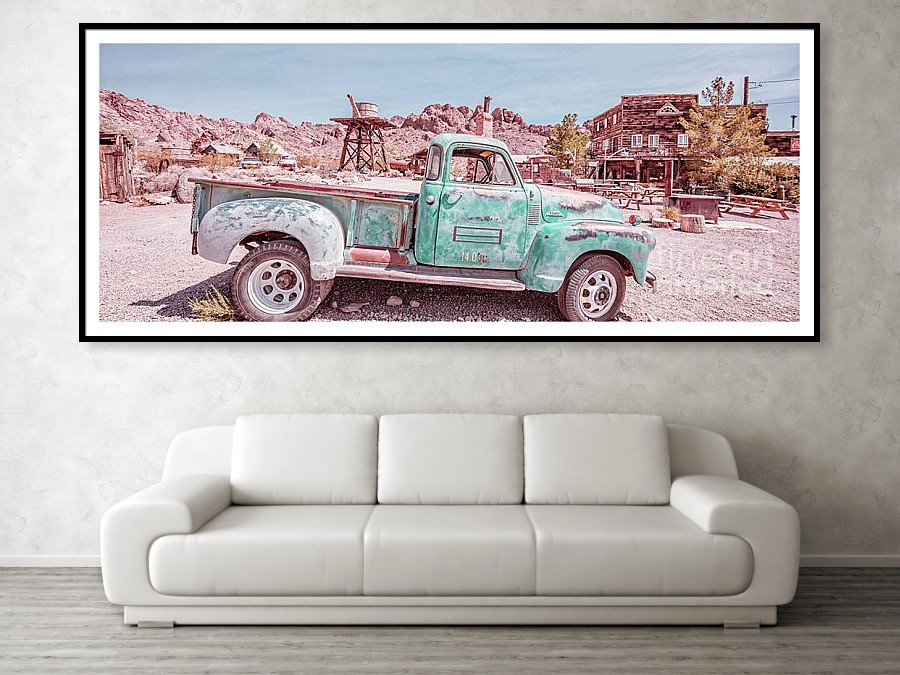The American West is full of abandoned ghost towns. Towns that saw booms and busts due to tragic weather events like droughts and flood, fire or drops in market prices of precious metals. People spend time, money, labor, bullets and lives building these places only to up and leave it all behind.
Photo above: Eldorado Mine Nelson Ghost Town, Nevada by Edward Fielding.
Typically these towns were rough and tumble wild lawless places in their heyday and today exist only because of the dry weather that preserves their remains which include frontier buildings, old mining equipment, vehicles and a lot of ghost stories.
BANNACK, MONTANA


Bannack, Montana is one of the best-preserved ghost towns in the country. Once the capital of the Montana territory, now a Montana State Park.
- Bannack Graveyard
- Secret Rites Above, ABCs and 123s Below
- The Wild Wild West
- Frontier Justice – the case of the lawless lawman

WIDTSOE, UTAH
Drought killed this settlement not far from Bryce Canyon National Park. By 1912 the growing community of Winder had two hotels, four stores, a post office, sawmills, a confectionary plant, a church meetinghouse that was also used as a school. In 1915 water was piped from a local spring to the town. The town was finally renamed in 1917 to Widtsoe in recognition of his agricultural expertise. With the relocation of the US Forest Service’s district office to Widtsoe, and by 1919 the community had an estimate population of approximately 1,100 residents.
A severe drought in 1920 began to drive dry farmers out of the Widtsoe town area, and this was despite efforts by developer W.F. Holt to build more homes and to construct a water irrigation system from nearby Pine Lake.
Widtsoe’s population slowly declined until there were just a few dozen families remaining. In 1936 the Federal Resettlement Administration purchased land from the remaining landowners, and tore down most of the buildings. The last residents departed Widtsoe in 1938 thus creating a ghost town.

JEROME, ARIZONA
One of many old copper mining towns in Arizona, Jerome was founded around the turn of the 19th century. Two companies were literally tearing down the mountains to get at the riches beneath it. The town literally blew itself up a few times and fires raged below in the mined dug underneath the buildings. The old town jail literally slid off its foundation and ended up a few streets below.
By the 1960s the town was basically deserted and earning not tax revenue to the State basically gave it away to any hippies interested in moving in and fixing up the place. Now it’s a bustling little tourist spot with museums, art galleries, and restaurants.


Techatticup Mine, Nevada
In the heart of Eldorado Canyon, just east of Nelson, lies the Techatticup Mine a collection of a store, a stamp mill, a bunkhouse, and a few tin miner cabins.
Techatticup Mine was a part of one of the earliest and richest mining districts in pre-Nevada.
In the 1700s after founding a small settlement at the mouth of the Colorado River—referred to as Eldorado—the Spanish commenced mining in the area, but found mostly silver before deeming the area unproductive and moving on.
Nearly 75 years later, the area would be visited by prospectors employing different methods, which allowed them to uncover the gold that had eluded the Spanish. The finds remained relatively secret until 1858, when steamboats began making their way up the Colorado River, causing whispers of gold to swell into a full-fledged mining boom.


- A Photographer’s Dream
- A Nevada ghost town you can visit
- Last Chance Gas
- Lust for Gold – Eldorado Canyon

Grafton Ghost Town
A few well-preserved buildings of an old Mormon settlement just outside of Zion National Park are all that is left of the town of Grafton. Floodwaters and trouble with the Native American’s in the area sealed the fate of this hardscrabble land that the Mormon settlers hoped would bring forth a good crop of cotton.
Nevada City, Montana
Nevada City was a mining ghost town until the Bovey family restored it between 1945 and 1978. The entire town of Nevada City is a living historical museum. Early frontier buildings including saloons and school houses were moved to the site to preserve the quickly vanishing past.
Virginia City, Montana
No more colorful pioneer mining camp ever existed. Dramatic tales of the early days in this vicinity are legion. Rich placer diggings were discovered in Alder Gulch in the spring of 1863 and the stampede of gold seekers and their parasites was on! Sluices soon lined the gulch and various “cities” blossomed forth as trading and amusement centers for free-handed miners. Virginia City, the best known of these and the sole survivor, became the Capitol of the Territory.
The very much alive ghost town, Virginia City, Montana, is frozen in time. It is a remarkably well preserved old west Victorian gold mining town just 20 miles west of Yellowstone National Park (90 miles by road).
